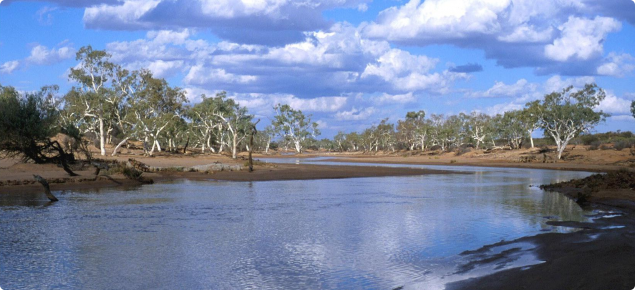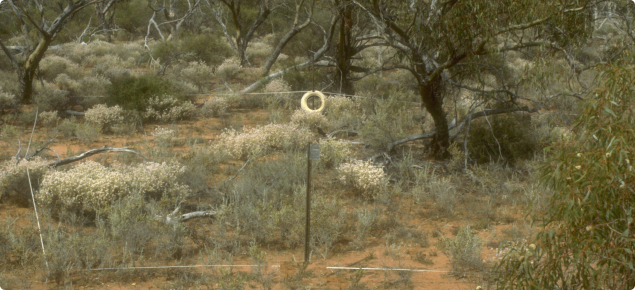How to use this survey
This survey can help pastoral industry managers to plan and manage for sustainable use of pastoral natural resources, and protect degraded areas or areas at risk of degradation.
This survey:
- identified and described the condition of soils, landforms, vegetation, habitat, ecosystems, and declared plants and animals
- assessed the impact of pastoralism
- recommended land management, including recommended carrying capacities, for each pastoral lease.
Survey area and inventory summary
The Lower Murchison River area was surveyed by P Hennig between 2002 and 2003. It was published as Technical bulletin no. 96 An inventory and condition survey of the lower Murchison River area, Western Australia.
The survey covered about 13 000 square kilometres of rangeland country around the lower reaches of the Murchison River (and surrounds), and has been designated the ‘Lower Murchison River area’.
The western boundary of the survey area coincides with the rugged, almost continuous Zuytdorp Cliffs at the Indian Ocean. The eastern boundary borders the lower part of the Murchison River rangeland survey. The northern boundary adjoins the southern extremities of the Carnarvon Basin rangeland survey and the southern boundary links to agricultural cropping and grazing land, north of Geraldton.
The survey identified 25 soil types throughout the survey area. By far the most dominant were the red and yellow sandplain soils. These soils ranged from shallow near the coast to deep further inland. The soils associated with the Murchison River ranged from deep loams to shallow loams and sand.
Twenty-seven vegetation types were identified. These are summarised into 11 broad vegetation groups. The most common vegetation groups were acacia and eucalypt shrubland/woodland and heath communities on sandplain.
Condition summary
The survey report provides condition statements – for the time of the survey – for the whole survey area and for each land system. Pasture condition and soil condition were assessed at points throughout the survey area.
The survey found that:
- about 82% of the pastoral area was in very good, good or fair rangeland condition
- of the non-pastoral land, all was in very good, good or fair rangeland condition.


